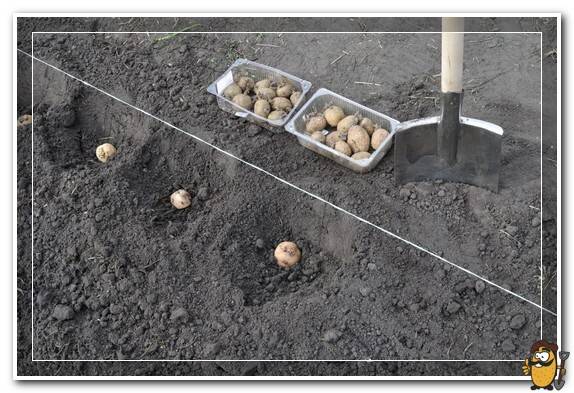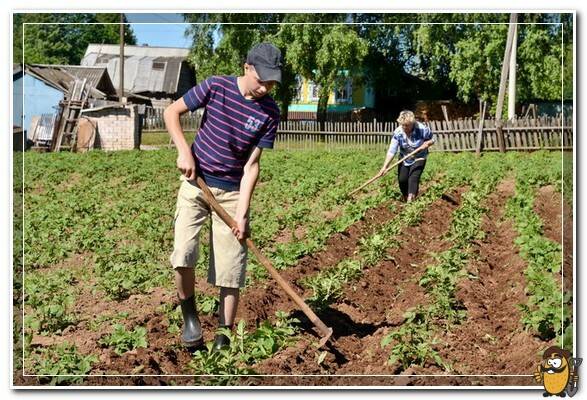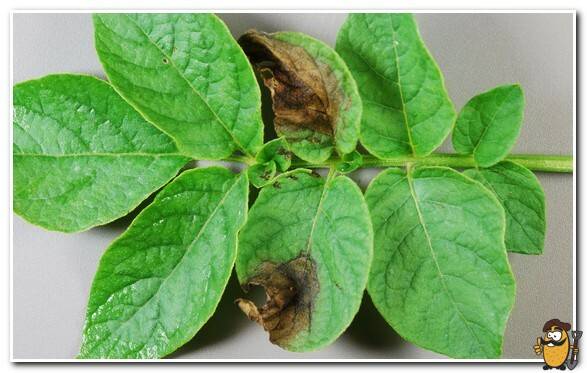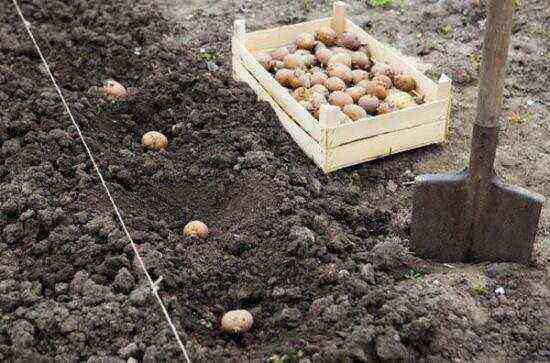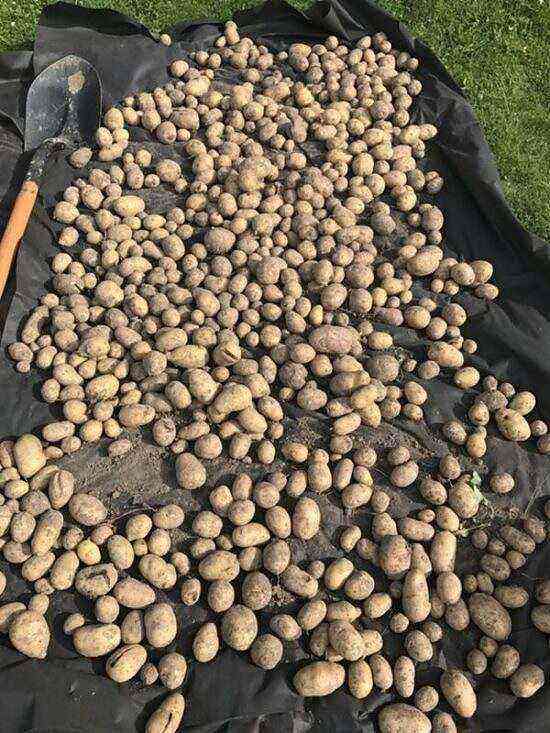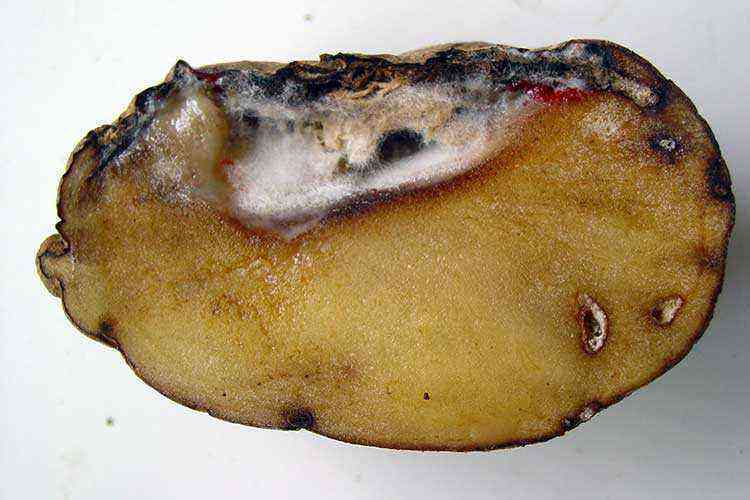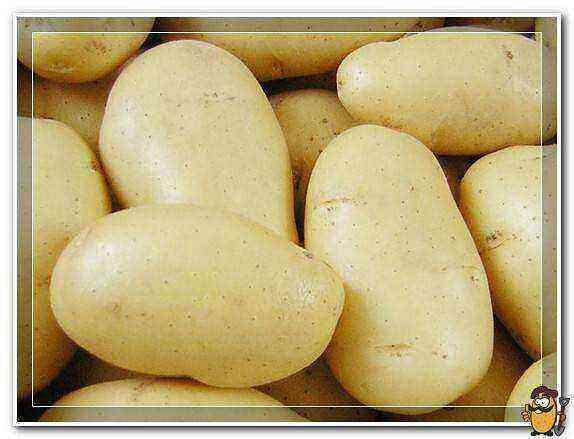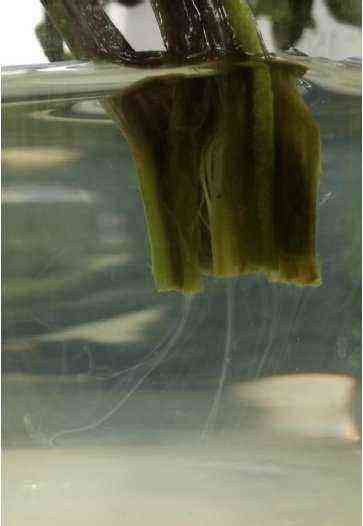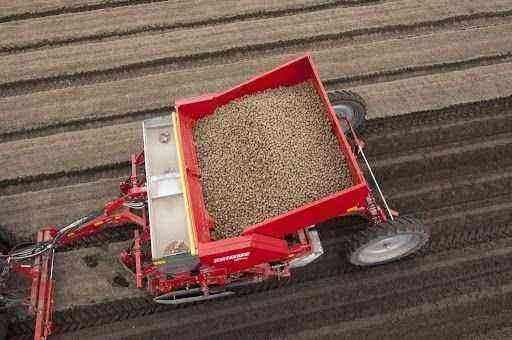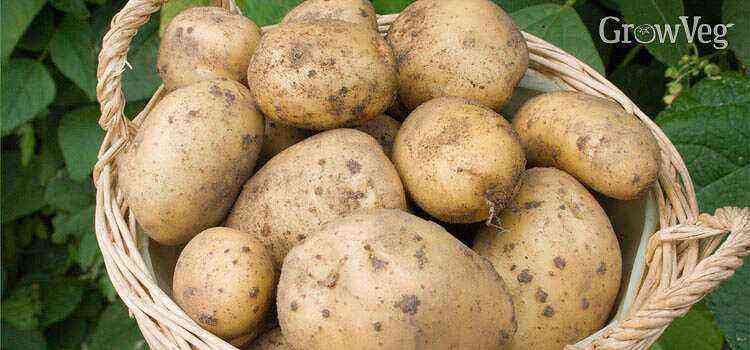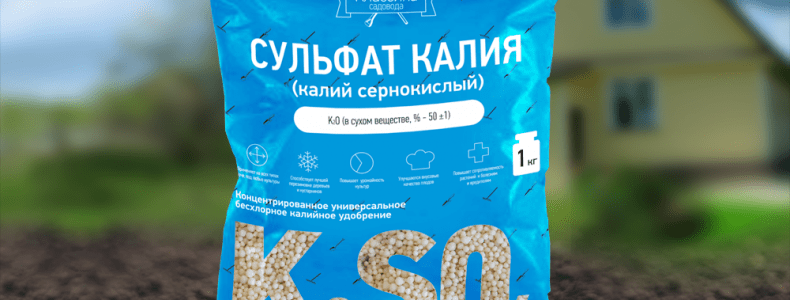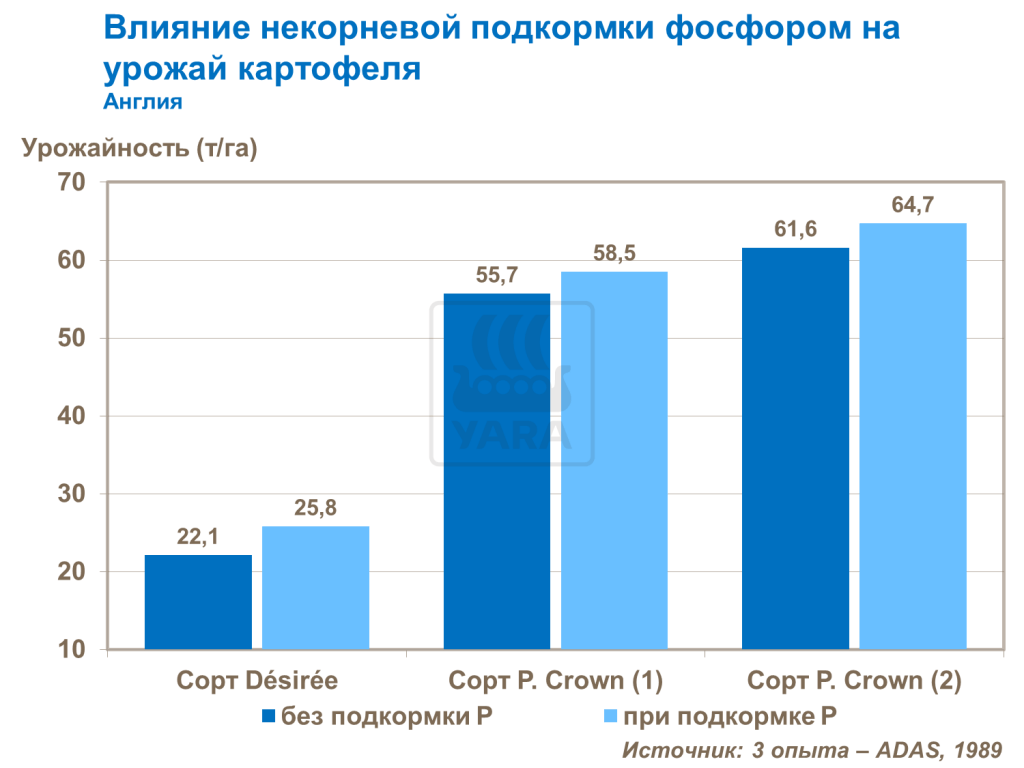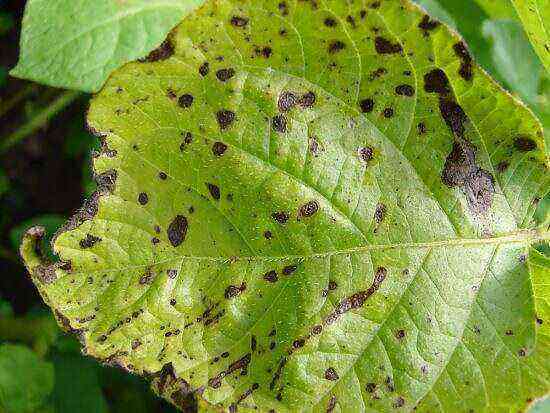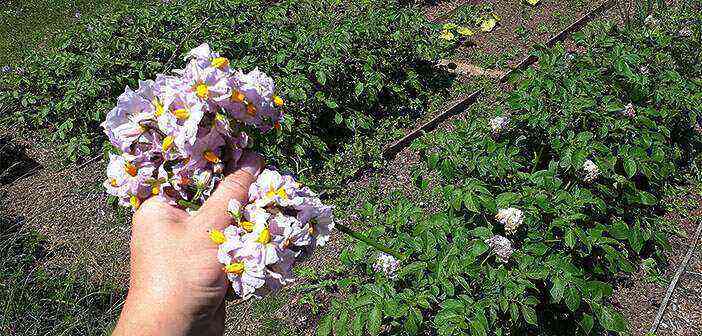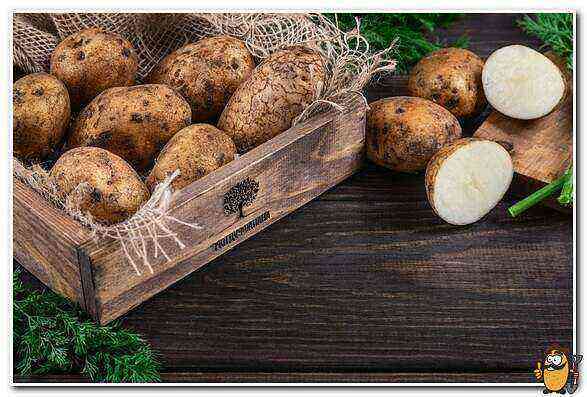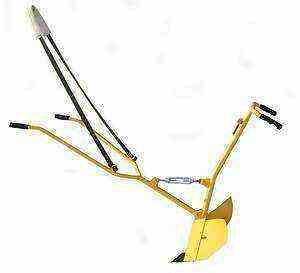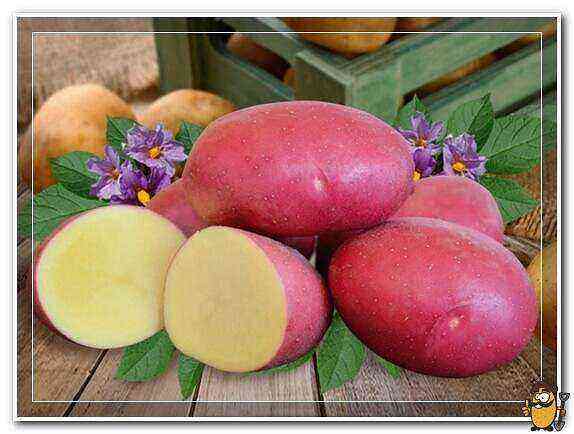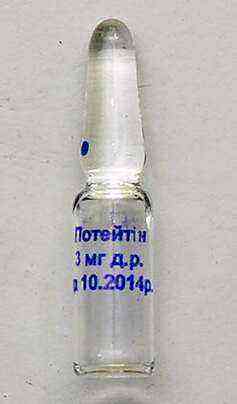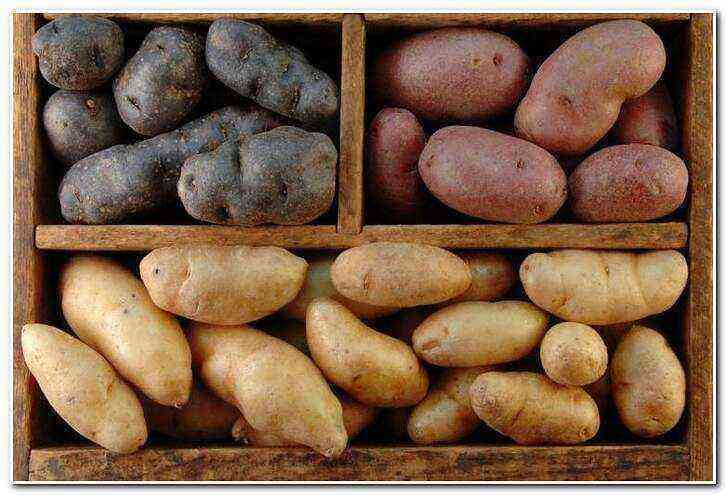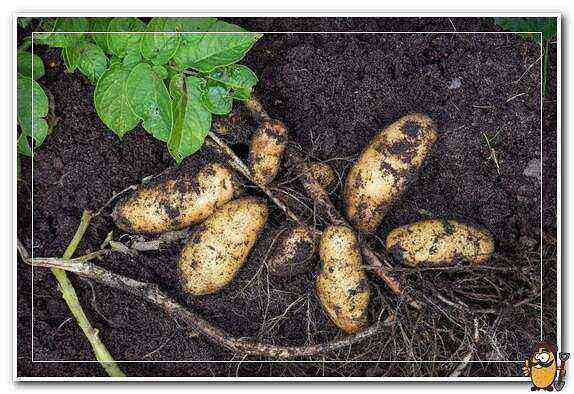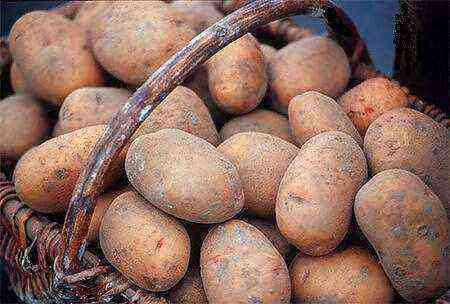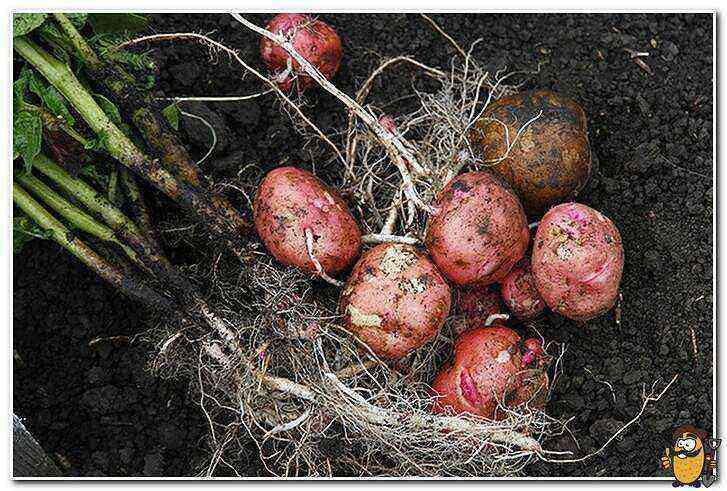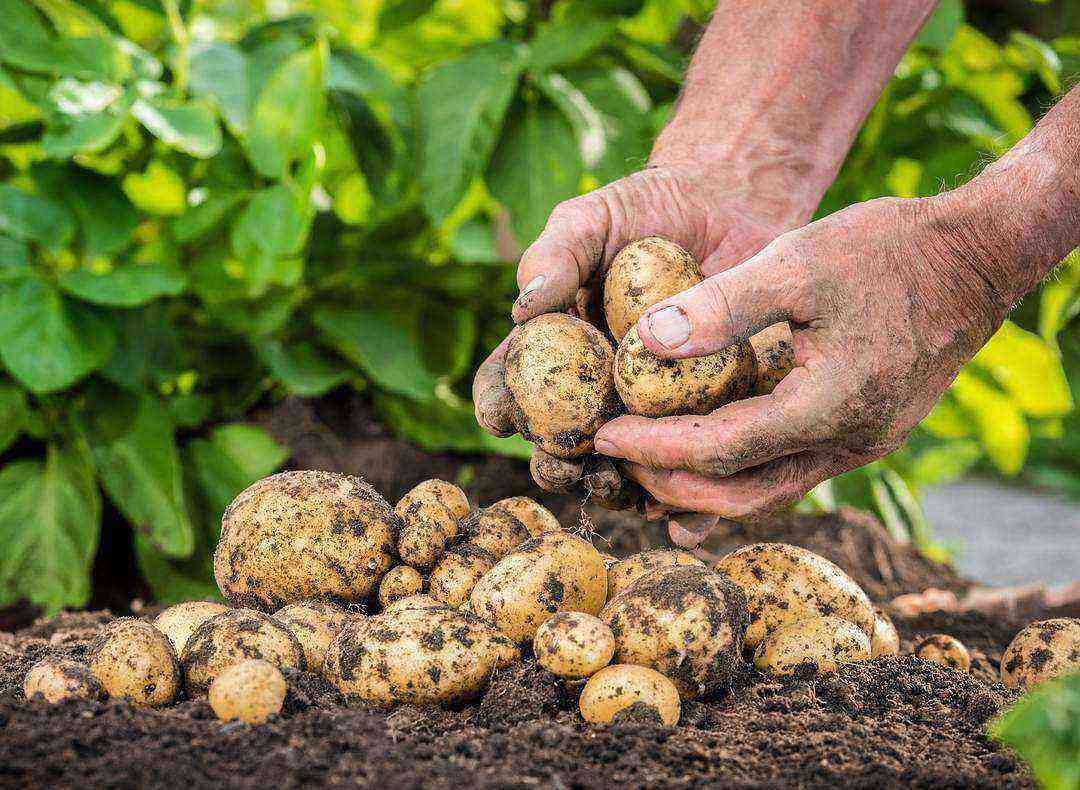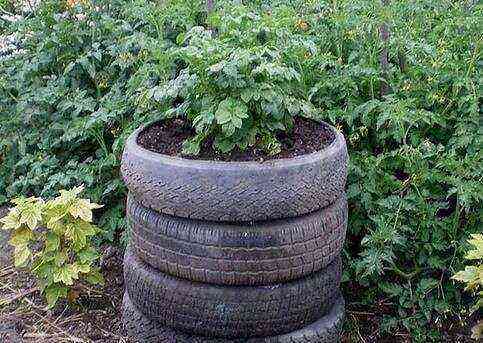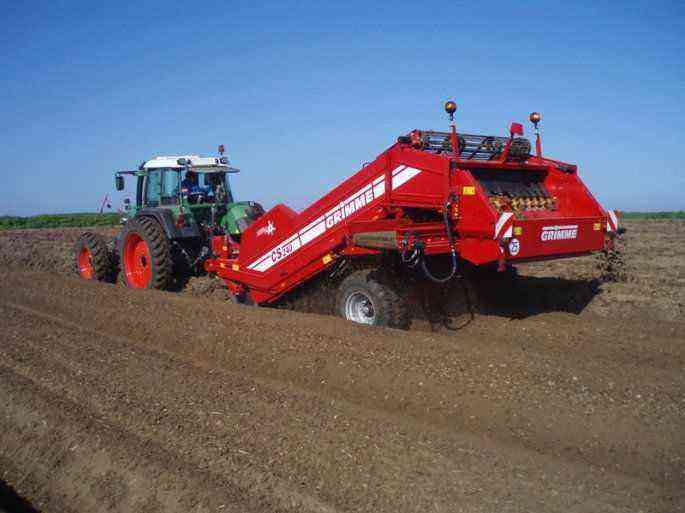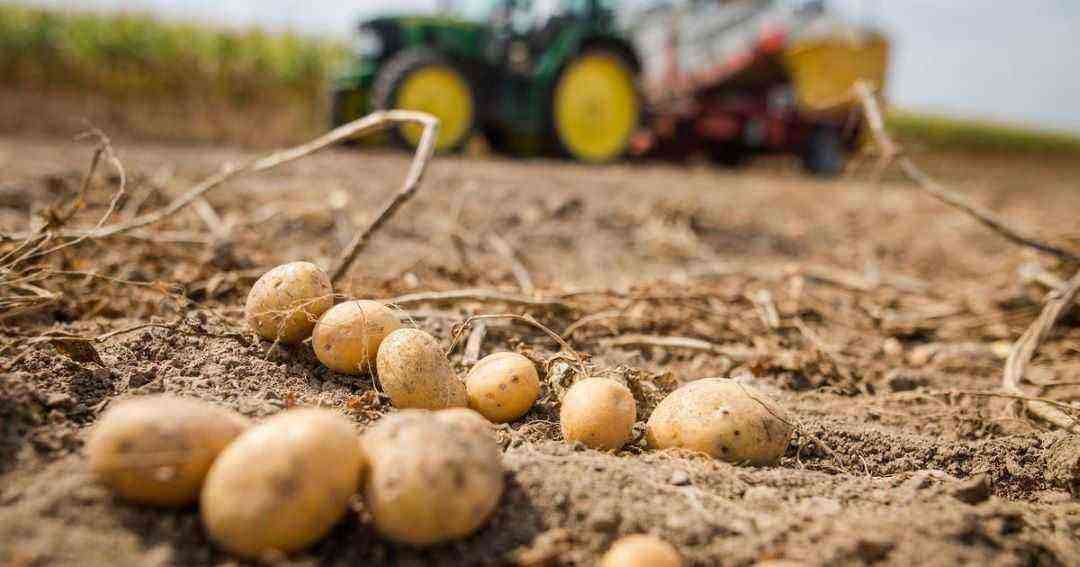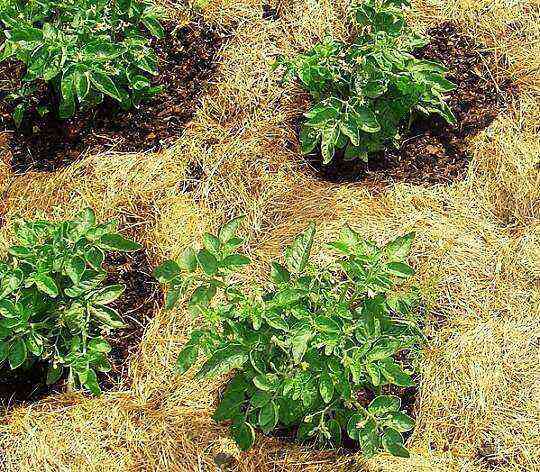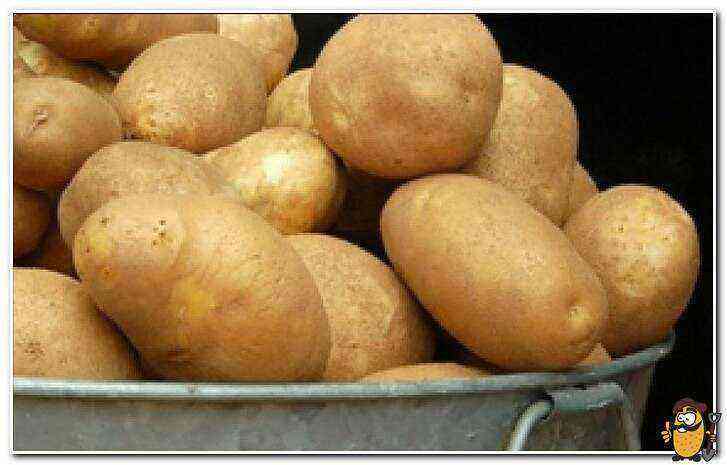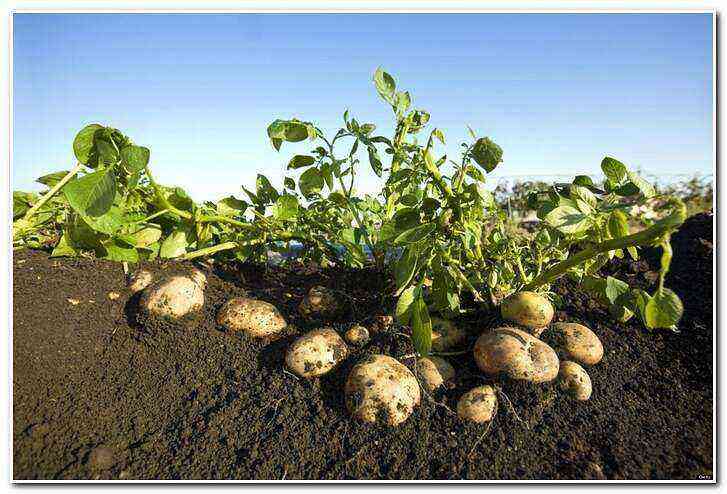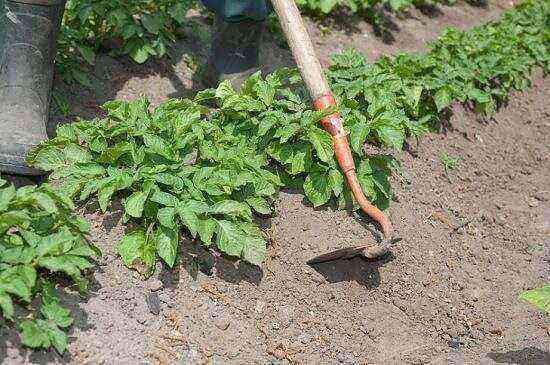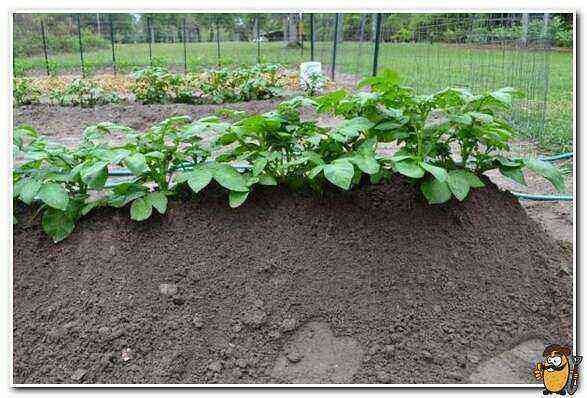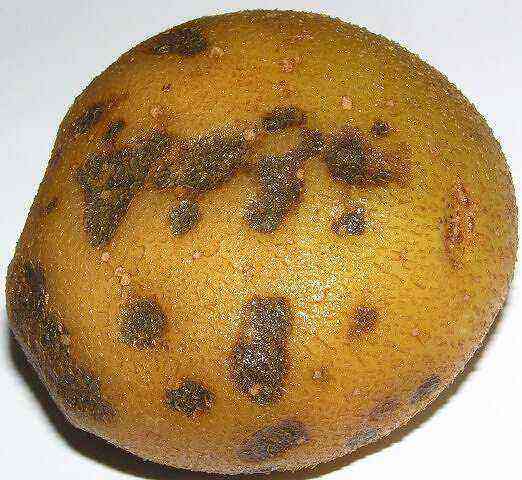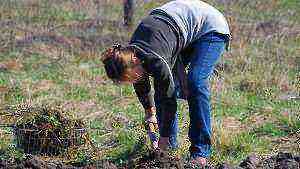Skarb potatoes are one of the best mid-season varieties bred by Belarusian breeders. It was entered into the state register of the Republic of Belarus in 1997, and 5 years later it was also assessed by the Russian State Commission for the Testing and Protection of Breeding Achievements. Scarb was recommended for cultivation in four regions of the Russian Federation: Central, Volgo-Vyatka, North-West and Ural. Almost 20 years have passed since then, many new varieties have appeared, but this potato “did not leave the race”, it continues to remain popular.
In the same Belarus, the Skarb variety now occupies about 25% of the area allotted for potatoes. We also hold it in high esteem among many farmers and summer residents, whose choice is explained by the high yield and excellent taste of this potato. From Belarusian belongings are translated as “treasure” or “treasure”, which is quite true. Our neighbors harvest up to 600 c / ha of this potato, the maximum yield is fixed at 630 c / ha. In Russia, yields are more modest – up to 450 c / ha, but this is also a very high figure.
Description and main characteristics of the Scarb variety
Scarb potatoes are a mid-season variety, 80-90 days pass from the first shoots to full maturity of the tubers. Externally, the plants are not much different from most other varieties. Bushes of medium height, semi-erect, moderately spreading. The leaves are also medium, with little or no waviness at the edges. During flowering, small white flowers appear on the bushes.
Each bush gives up to 14 large round-oval tubers. In the nest, they are located compactly, which greatly simplifies the old-fashioned harvesting method – using a pitchfork or a shovel. The tubers have a smooth, dense pale yellow rind and the flesh is also yellow, but more intense in color. The eyes are few, small, located on the surface itself.
There are few or no small potatoes in the bush, the mass of marketable ones ranges from 90 to 140 g. In general, the yield is 250-450 c / g, depending on growing conditions, weather, agricultural technology and a number of other factors. In terms of marketability of tubers, Skarb is not inferior to such varieties as Bronnitsky or Golubizna, this figure reaches 99%. The crop showed a record yield in the Russian Federation in the Vologda Oblast, where potato growers managed to collect 508 centners of selected potatoes per hectare.
Scarb is a variety for table use, the tubers of which are almost never boiled (culinary type B). Loose pulp becomes only after prolonged cooking. The starch content can be different, from 10,5 to 17,5%. This potato can be used to make mashed potatoes and soups, use it in salads and other vegetable dishes, and make delicious chips from it. Scarb potatoes will delight you with their excellent taste when fried. In culinary terms, tubers have only one drawback – a slight wateriness.
The potato variety, scarb, has a fairly high immunity to most common crop diseases such as nematodes, mosaics, rot and others, but it is afraid of phytophthora. Late blight can affect both leaves and tubers. Drought tolerance is average. At the very beginning of the growing season, waterlogging of the soil should be avoided. As for insects, standard measures are taken to combat them – treatment of plantings with special preparations, manual collection of the pest, setting traps, and so on.
Agrotechnical events
Scarb demonstrates stable yields on any soil, makes the most of their resources, but it gives the highest yields in light sandy or sandy loam soil. Do not plant these potatoes in the lowlands, where water stagnates in spring. Experts recommend choosing high, open areas for it with good natural light.
Preparing for planting
Since the variety loves loose, oxygenated soil, it is advisable to prepare the garden in the fall. First, humus and wood ash are scattered on it at the rate of 5-10 kg per square meter of the first fertilizer and 150-200 g of the second. After that, the site is dug onto a shovel bayonet with the obligatory overturning of the upper layer of earth. If there is not enough fertilizer for the entire area planned for potatoes, then it is better to leave it and apply it in the spring during planting in each hole. Before planting, the soil is loosened to get rid of the dense upper crust formed during the winter.
Planting material, like the plot, also needs proper preparation. Three weeks before the planned planting, the selected tubers are transferred from storage to a warm germination room. It is important to carefully examine them and discard potatoes with signs of disease and severe mechanical damage. For prophylactic purposes, planting material is treated with copper sulfate or Prestige (diluted according to the instructions).
The treated planting tubers are left in a room with a constant temperature of 18-20 degrees and sufficient sunlight. They are scattered on the floor or laid out in boxes in two layers. To prevent them from becoming flabby during germination, they are sprayed with water once a week. The potatoes will be ready for planting when strong sprouts up to 3 cm long appear on it.
Planting and care
Planting is carried out in May, when the ground is already well warmed up. The optimal scheme for this variety is 60 x 35, the depth of planting tubers is 8-10 cm. Farmers and gardeners complain about the uneven germination of Scarb potatoes, but this does not matter, the plants are leveled during the growth process.
At least twice during the entire growing season, this crop will require loosening, combined with weeding. 7-10 days after planting, the soil in the beds is loosened with a rake, while removing young weeds from the beds. Re-loosening in the aisles is carried out after the emergence of shoots. In addition to getting rid of weeds, this procedure improves the access of moisture and air to the roots.
Scarb potatoes need full watering, especially in dry weather. You can water the plantings once a week, monitoring the condition of the soil and avoiding excessive moisture. If the end of spring and the beginning of summer turned out to be rainy, it is better to refuse watering altogether, since an excess of moisture can lead to disastrous consequences. Due to the high moisture content of the soil, the planting tubers begin to rot, which negatively affects the growth of plants, and hence the yield.
Plants are hilled three times per season: when the shoots reach 10 cm, 3 weeks after the first hilling, and also at the beginning of flowering. Since the sprouts of Scarb potatoes do not rise evenly, the first hilling can be a problem. Nevertheless, it must be carried out, because the heaps contribute to the formation of new roots and the formation of tubers, in addition, the access of oxygen to the root system improves. In general, thanks to hilling, the yield of potatoes increases by 15-20%.
The Scarb variety responds well to feeding. Experts advise feeding during the formation of tops, during the formation of buds, as well as during the flowering period.
Fight against late blight and insects
Potatoes of this variety have good immunity to all known diseases of the culture except late blight. Most often, late blight appears as a result of excessive moisture, after heavy rains or heavy watering, in damp weather. The disease can be diagnosed as early as 3-4 days after infection by the dark brown spots that form on the lower leaves. When such symptoms appear, you need to act immediately, otherwise the fungus will “move” to the tubers and spoil the crop. It will not be possible to completely cure late blight, but you can stop its development by treating the plantings with copper sulfate or other copper-containing agents. If after the treatment it rained and the solution was washed off with water, the procedure must be repeated. As a prophylaxis against late blight, potato beds are sprinkled with dry wood ash.
Of the insects, the Colorado potato beetle and wireworm inflict the greatest damage to the Scarb potatoes. Vegetable growers effectively fight the Colorado potato beetle and its insatiable larvae using a variety of means:
- biological – Bitoxibacillin, Boverin, Fitoverm and their analogues;
- chemical – Aktar, Corado, Tabu, Prestige;
- folk – diluted tar, solution of ammonia, infusion of onion peel.
As for the wireworm, it is easier to prevent the appearance of this pest than to try to get rid of it later. The following measures are effective against the wireworm:
- planting siderates on the site, repelling insects (phacelia, mustard);
- decrease in soil acidity (lime application);
- adding onion husks to each hole when planting;
- removal of tops and other plant residues from the site immediately after harvest.
The wireworm spoils the tubers by making narrow passages in them. To protect the plantings from this pest, you will have to work a little, otherwise the quality of the potatoes can be greatly affected.
Collection and storage
You can harvest Skarb potatoes in the second half of September. In order for the tubers to fully ripen, the tops should be mowed 2 weeks before harvesting. The dug up potatoes are dried in the shade, sorted and sent to a prepared storage facility. The keeping quality of this variety is excellent; under optimal conditions, 93-99% of the harvest is preserved until spring. At the same time, last year’s tubers look like they have just been removed from the ground.
In conclusion
The pride of the Belarusian selection is the name of the Skarb potato. Reviews about him are only positive. This is an excellent option for growing in a summer cottage, productive, unpretentious to conditions, resistant to diseases and pests, and most importantly, tasty. Thanks to these qualities, it remains popular not only in the countries of the former Soviet Union, but also far abroad.


